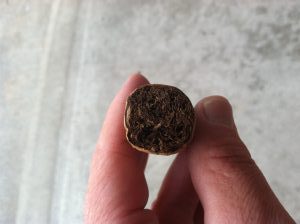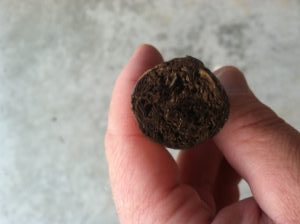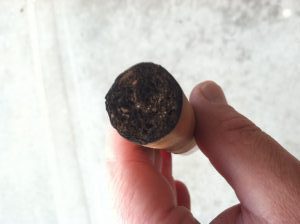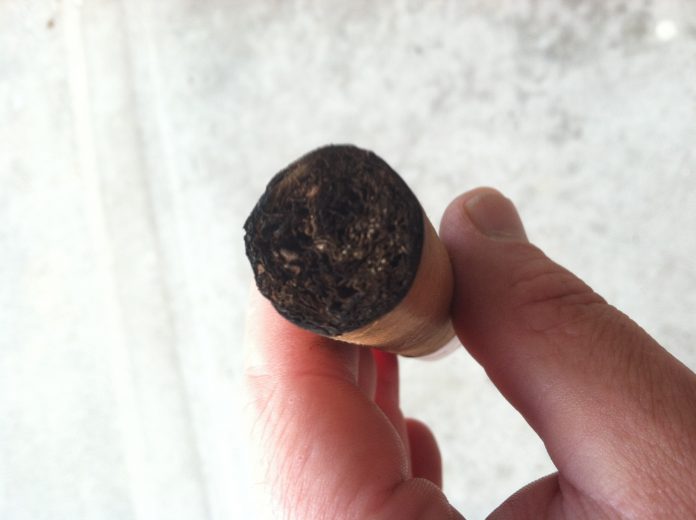Today, I’d like to introduce you to a little trick I like to call the “pre-hale.”
What is Pre-hale?
Pre-haling is a simple technique that anyone can use to enhance their cigar smoking experience. Even those who find retro-haling too intense an experience for their nose will find they can appreciate new sensations with this technique.
Each leaf contained in a cigars “blend” or “liga” brings something different to the table. Wrapper leaves, high in oils, contribute a great deal of the aromatic components to the cigar.
Binder leaves are also usually relatively high in oil content and contribute to the aroma of the cigar as well. Finally, the filler leaves, particularly the seco (or Volado), contribute a great deal to the overall mouth feel and taste one perceives.
As a cigar is lit the heat initiates subtle changes within the tobacco leaves at the foot of the cigar. The first to occur is the warming of the leaves, followed by browning and finally combustion of the tobacco at the foot of the cigar.
As the tobacco leaves brown in the heat, the volatile oils in the tobacco leaf warm and, when the leaves ignite (combust) and the heat within the cigar increases, these same oils become mixed with steam, becoming part of the vaporized components we know as smoke.
The key to the “pre-hale” is to stimulate the browning of the tobacco leaves without actually initiating combustion.
What’s the point?
The goal of pre-haling is to garner a preview of the aromatic qualities of the cigar by warming the essential oils in the tobacco leaves just to the point when they first become recognizable. We are not out to light the cigar, merely to warm the foot.
To pre-hale, begin with a cigar that has already been visually inspected and cut. Perform your pre-light inspection including smelling the wrapper leaf as well as the tobacco at the foot.
Be certain to inspect the bunching at the foot as the pattern can provide insight into how the cigar is constructed and hints at the various leaves contained in the blend.
Using your lighter very gently begin to pass the flame near the cigar’s foot. Hold the cigar at a 45 degree angle to the flame to minimize the chance of scorching the wrapper.
When the tobacco at the foot of the cigar begins to darken and the first wisps of smoke begin to form remove the flame and check the foot of the cigar.
If there are areas that have not begun to brown, return the flame, even more gently, until the entire foot shows signs of darkening. If combustion begins, remove the flame and allow the cigar a moment or two to stop burning.
The untoasted foot of a cigar

The partly toasted foot of a cigar

Well browned and ready for the “pre-hale”

When the entire foot of the cigar has been gently browned and produces slight tendrils of smoke, it’s time to “pre-hale.”
Raise the warmed foot of the cigar to your nose, holding it an inch or less away, and gently inhale the scent through your nose. You should be able to apprehend subtle aromas rising from the foot of the cigar. If not, re-warm the foot slightly and try again.
Conclusion
What you will find is that there are smells you haven’t noticed before. This is especially true if you are not one to retrohale.
When I use this technique on some cigars I pick up on spicy aromas that I later recognize in the smoke. However, I’ve also identified smells similar to warm toast and roast marshmallows in some blends which have not translated to the retro-haled aroma of the cigar when smoked.
My favorite pre-hale profile, currently at least, is the Partagas brand which features an African Cameroon wrapper, Mexican binder, and Dominican filler blend. In the Partagas I pick up a “baking spice” aroma with a subtle sweetness similar to caramelized sugar.
So, before you light up that cigar, take a moment to try this technique to gain a new perspective on your favorite premium blend.
Good smokes!
by Martin Klausmeier, Contributor






Thank you for your sharing the knowledge